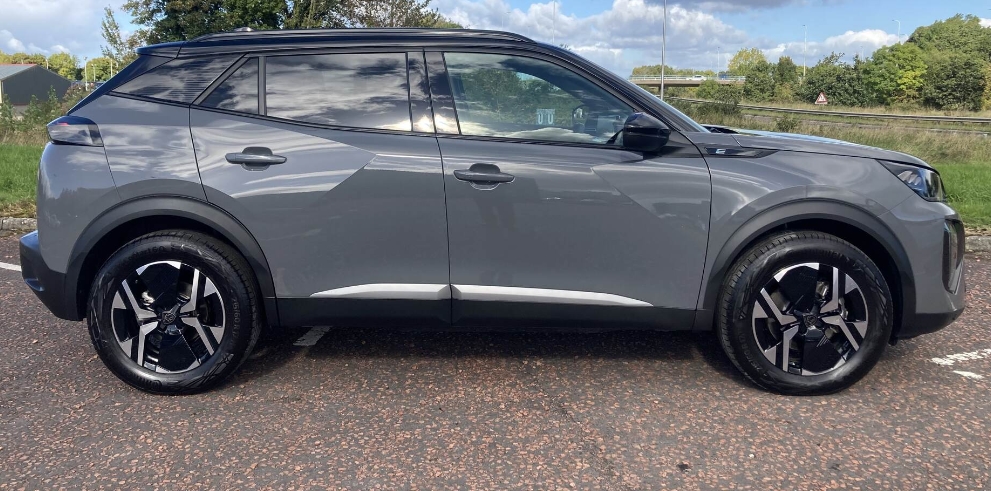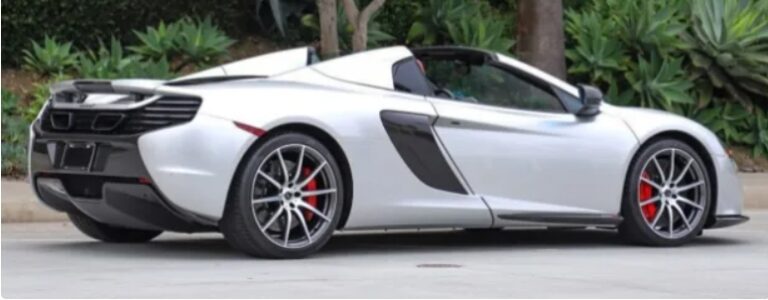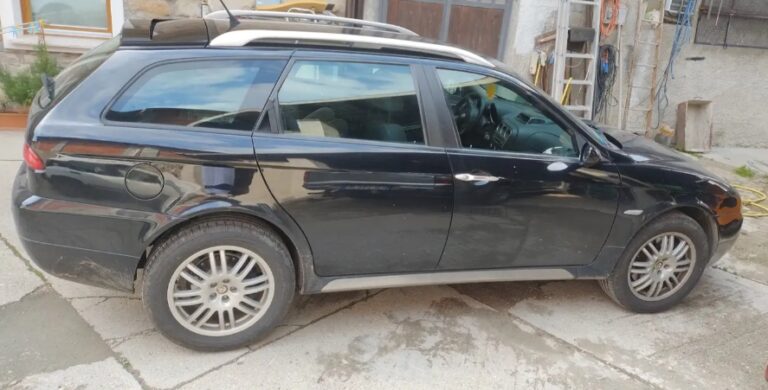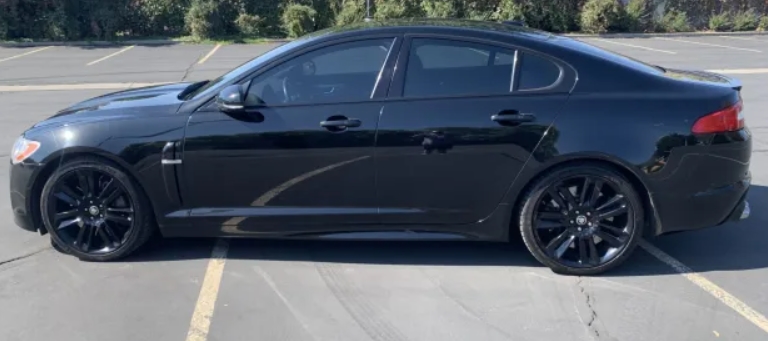The Peugeot 2008 Evolution: Charting the Ascent of a Compact SUV Lion
In the fiercely competitive landscape of the modern automotive world, few segments have witnessed an explosion in popularity as dramatic as the compact SUV class. These B-segment vehicles, blending the practicality of a hatchback with the raised driving position and rugged aesthetics of an SUV, have become the default choice for countless families worldwide. Within this bustling arena, the Peugeot 2008 stands as a compelling case study in automotive evolution, transforming itself from a pragmatic, crossover-style contender into a bold, technologically advanced, and multi-powertrain leader. Its journey, spanning two distinct generations, mirrors the rapid changes in consumer tastes, technological capability, and environmental consciousness over the last decade.
Generation One (A94): The Pragmatic Pioneer (2013-2019)
Peugeot’s first foray into the compact crossover market was a calculated and logical step. Launched in 2013, the first-generation 2008 was built on the PF1 platform, the same underpinnings as the highly successful 208 supermini. It effectively served as a replacement for the 207 SW (station wagon), tapping into the burgeoning demand for vehicles with a higher stance and more versatile interior space.
Design and Concept: The initial 2008 was less of a brawny SUV and more of a ruggedized estate car. Its design was soft and rounded, with a friendly face characterized by Peugeot’s floating grille and elegantly shaped headlights. Its most distinctive feature was a stepped roofline, a clever design cue that created extra headroom for rear passengers without compromising the vehicle’s sleek profile. While it featured SUV-like elements such as scuff plates and roof rails, it retained a car-like footprint, making it an easy and unintimidating vehicle to drive in urban environments.
Inside, the 2008 was one of the first models to introduce the world to Peugeot’s revolutionary i-Cockpit. This driver-focused layout featured a small-diameter steering wheel, a high-set instrument cluster viewed over the rim of the wheel, and a central touchscreen. It was a bold move that aimed to provide a more engaging and less distracting driving experience, and it would become a defining feature of all future Peugeot models.
Models and Trim Levels (Pre-Facelift, 2013-2016): The UK market trim structure for the first-generation 2008 offered a clear progression of equipment and style:
Access/Access+: The entry-level model, it provided the essentials like electric front windows, cruise control, and LED daytime running lights, but often came with steel wheels and basic air conditioning.
Active: The volume seller. This trim added key features like 16-inch alloy wheels, the 7-inch multifunction colour touchscreen, DAB radio, Bluetooth connectivity, and front fog lights.
Allure: Stepping up to Allure brought more premium touches, including dual-zone climate control, rear parking sensors, automatic headlights and wipers, and more stylish 16-inch alloy wheels.
Feline: The top-tier trim, the Feline was lavishly equipped with features like satellite navigation, a panoramic glass roof with an electric blind, leather upholstery, and larger 17-inch alloy wheels.
A notable feature on higher trims was the Grip Control system. This was an advanced traction control system with selectable modes (Snow, Mud, Sand, ESP Off) that optimised front-wheel grip in low-traction conditions, offering a semblance of off-road capability without the weight and expense of a full all-wheel-drive system.
Engines (Pre-Facelift): The engine line-up focused on efficiency:
Petrol: 1.2-litre VTi (82 hp), 1.6-litre VTi (120 hp).
Diesel: 1.4-litre HDi (68 hp), 1.6-litre e-HDi (92 hp and 115 hp).
The 2016 Facelift: A More Assertive Stance In 2016, the 2008 received a significant mid-life facelift to bolster its SUV credentials. The most noticeable change was at the front, where the softer horizontal grille was replaced by a more aggressive, upright one with a prominent Peugeot lion emblem at its centre. Black plastic wheel arch extensions were added to create a more rugged, off-road look, and new paint colours and wheel designs refreshed the car’s visual appeal.
Inside, the technology was updated to include Apple CarPlay and Android Auto compatibility through the Mirror Screen function.
Trim Levels and Engines (Post-Facelift, 2016-2019): The trim hierarchy was revised to align with Peugeot’s new brand strategy, introducing a sportier flavour:
Access, Active, and Allure trims largely continued, with enhanced standard equipment.
GT Line: This was the major addition. The GT Line trim replaced the Feline at the top of the range, offering a distinctively sporty character. It featured a gloss black grille, black exterior detailing, unique 17-inch alloy wheels, and a premium interior with red contrast stitching on the seats, steering wheel, and gear lever.
The engine range also saw a crucial update. The ageing VTi petrol engines were replaced by the PSA Group’s new, award-winning 1.2-litre PureTech three-cylinder turbo engines, offered in 110 hp and 130 hp outputs. These engines were lauded for their punchy performance and impressive fuel economy. The diesel lineup transitioned to the cleaner and more efficient 1.6-litre BlueHDi engines, with outputs of 75 hp, 100 hp, and 120 hp.
The first-generation 2008 was a resounding commercial success for Peugeot, selling over a million units. It established the nameplate as a serious player, but the market was evolving, and its successor needed to make an even bigger statement.
Generation Two (P24): The Bold Reinvention (2019-Present)
Launched in late 2019, the second-generation Peugeot 2008 represented a seismic shift. This was not a mere evolution; it was a complete reinvention from the ground up. Built on the new Common Modular Platform (CMP), the new 2008 was longer, wider, and lower, giving it a more dynamic and commanding road presence.
A Revolution in Design: The design of the new 2008 was its most dramatic departure. It adopted Peugeot’s latest, aggressive design language, characterized by sharp, angular lines and a host of striking details. The front was dominated by a large, intricate grille and the iconic “sabre-tooth” LED daytime running lights that clawed their way down the bumper. The profile was muscular and sculpted, with triangular creases stamped into the doors, while the rear featured the three-claw full-LED light signature connected by a black horizontal strip. It had transformed from a friendly crossover into a sharp, confident, and undeniably desirable compact SUV.
The Multi-Energy Powertrain and the e-2008: The CMP platform was engineered from the outset to be a multi-energy platform. This meant that alongside traditional petrol and diesel engines, Peugeot could offer a fully electric version without compromising interior or boot space.
The Peugeot e-2008 was a game-changer. It arrived with a 50kWh battery and a 100kW (136 hp) electric motor, offering a WLTP-certified range of around 200 miles. With support for 100kW rapid charging, it could recharge from 0-80% in approximately 30 minutes. The arrival of the e-2008 positioned Peugeot as a leader in the mainstream electric B-SUV segment, offering customers a stylish EV with no practical compromises compared to its internal combustion engine siblings.
A High-Tech Interior: The interior saw an equally radical transformation. The second-generation i-Cockpit was a technological tour de force, featuring a stunning 3D digital instrument cluster on higher trims, which projected key information in holographic layers for improved reaction times. The central touchscreen grew up to 10 inches, and the beautifully crafted “piano key” toggle switches for essential functions remained, adding a premium tactile feel. The overall material quality, fit, and finish represented a huge leap forward, placing the 2008’s cabin at the very top of its class.
Trim Levels (Launch, 2019-2023): The trim structure was streamlined to reflect the car’s more premium positioning:
Active Premium: The entry point, yet still generously equipped with 16-inch alloys, a 7-inch touchscreen, rear parking sensors, and air conditioning.
Allure/Allure Premium: Added larger 17-inch wheels, the 3D i-Cockpit, and a reversing camera. Allure Premium included connected 3D navigation and enhanced interior trim.
GT Line: As with the previous generation, this trim added a sporty aesthetic with a black diamond roof, full LED headlights, ambient lighting, and unique GT Line styling details inside and out.
GT: The flagship model, the GT came with advanced safety features like adaptive cruise control and lane positioning assist, Alcantara upholstery, heated front seats, and the larger 10-inch touchscreen as standard.
Engines (Launch):
Petrol: 1.2-litre PureTech Turbo in three states of tune: 100 hp, 130 hp, and a range-topping 155 hp (exclusive to the GT trim).
Diesel: 1.5-litre BlueHDi with 100 hp or 110 hp.
Electric: The e-2008 with its 100kW (136 hp) motor.
The 2023 Facelift: Sharpened Claws and New Technology In mid-2023, the second-generation 2008 received a facelift to keep it at the cutting edge. Visually, it adopted the new Peugeot shield emblem and a redesigned front end featuring three vertical light claws on each side, replacing the single sabre tooth. The rear light signature was also updated with a new horizontal design for the three claws.
The interior received a significant tech upgrade, with a 10-inch central infotainment screen becoming standard across the entire range, running Peugeot’s latest i-Connect software.
Powertrain and Trim Updates (Post-Facelift, 2023-Present): The biggest news was under the bonnet. The e-2008 received a major upgrade, featuring a more efficient and powerful 115kW (156 hp) motor and a new 54kWh battery. This combination boosted its official WLTP range to over 250 miles, a significant improvement that enhanced its real-world usability.
Furthermore, Peugeot introduced a 48V mild-hybrid powertrain. This system pairs a new-generation 136 hp 1.2-litre PureTech petrol engine with a small electric motor housed within a new six-speed dual-clutch automatic gearbox. The hybrid system allows for low-speed electric-only running and provides an electric torque boost under acceleration, reducing fuel consumption by up to 15%.
The trim levels were simplified to a three-tier system:
Active
Allure
GT
.
NO MORE dead batteries with this:

.
Conclusion: From Follower to Leader
The evolution of the Peugeot 2008 is a story of ambition and adaptation. It began life as a sensible, well-judged entry into a growing market, offering practicality and efficiency in an unassuming package. However, with its second generation, it underwent a profound metamorphosis. It embraced bold design, cutting-edge technology, and a forward-thinking multi-energy platform that included a class-leading fully electric variant. This transformation elevated the 2008 from a mere competitor to a genuine trendsetter, a vehicle that commands attention through its style and impresses with its substance. Its journey perfectly encapsulates the rapid ascent of the compact SUV and Peugeot’s successful reinvention as a stylish, modern, and technologically advanced brand.







